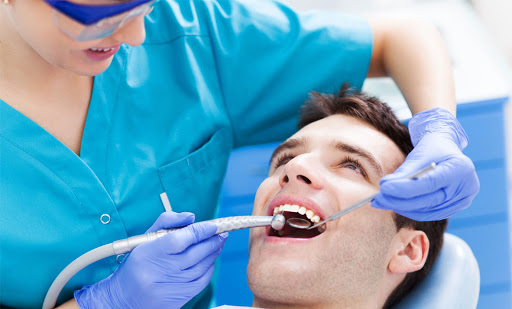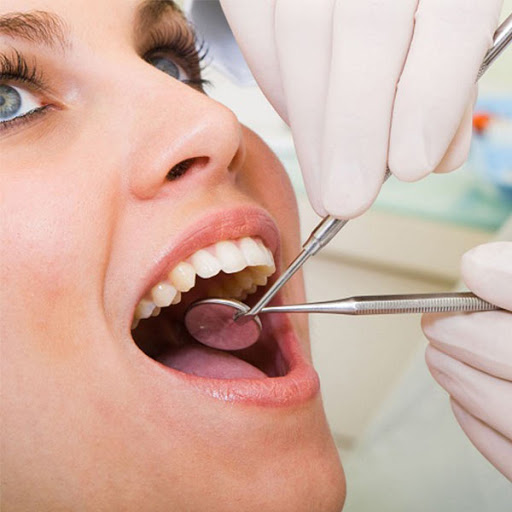Dr. Stanton has been practicing Dentistry since 1990, and has been a Periodontist since 1995. His practice is located in Rockville, MD. He received his Dental degree from New York University . Following graduation, Dr. Stanton completed a two year General Practice Residency at the University of Detroit Mercy School of Dentistry, where he gained valuable training in comprehensive dental care, including dental implant placement, the treatment of medically compromised patients, and emergency medicine . Dr. Stanton continued his studies at the University of Michigan where he received his Certificate in Periodontology. After completion of his periodontal program, Dr. Stanton served as a clinic director at The Ohio State University College of Dentistry and maintained a private periodontal practice.
Dr. Stanton has lived in the Washington , D.C. area since 1999. He is active in his community and in local, state and regional dental societies. His primary professional interest is the prevention and treatment of periodontal disease, in order to restore oral health, function, and esthetics. Dr. Stanton aims to assist your dentist in providing natural-looking, stable alternatives to fixed bridges and removable dentures using dental implants and periodontal regeneration. Dr. Stanton treats his patients with clinical excellence and the highest level of compassion.
DENTAL IMPLANT TREATMENTS
Single Tooth replacement
This method of tooth replacement can be very esthetic and functional for a period of time. However, a tooth supported bridge sacrifices the healthy tooth structure of the adjacent teeth and makes them more prone to future problems. It also does not replace the bone that previously surrounded the root. Since there is no longer a root to hold the bone in place, the bone deteriorates, or melts away. Benefits of replacing a single missing tooth with an implant supported crown
- It looks, feels and functions like a natural tooth
- It is much more esthetic long term
- It does not decay
- There is no need to grind down the adjacent natural teeth
- The bone is preserved, preventing a visible bony defect
- It is more hygienic (easier to clean) than a tooth supported bridge
Tooth Extraction with Immediate Implant Placement
In many cases single or multiple implants can be placed at the time of tooth extraction. With careful preparation of the extraction socket, the implant is placed where the previous tooth was located. Immediate implant placement following extraction saves time by reducing the number of surgical procedures and speeds up the healing and restoration process. If you think an immediate implant procedure might be right for you, please call us for a consultation.
If you will be having a front tooth extracted, we make sure that you have an immediate temporary replacement fabricated by your Dentist or Dr. Stanton. Dr. Stanton will place the appliance so that your appearance will not be disturbed. For patients that have never worn a removable appliance, there is typically an adjustment period to the new appliance.
In select cases, not only can we extract the tooth and place the implant at the same time, but Dr. Stanton can place a connector (abutment) on the implant so that a temporary crown can be connected to the implant that same day. At the time of your evaluation we can determine if you may be a candidate for this immediate implant with immediate temporization.
PERIODONTAL DISEASE TREATMENT
Nonsurgical Periodontal Therapy
Some people think periodontal therapy in a periodontist’s office always means surgical treatment. The fact is, in its earlier stages, periodontal disease responds quite favorably to nonsurgical periodontal therapy. Only in its more advanced stages of destruction is surgical intervention necessary. In fact, surgery is usually reserved for those situations when nonsurgical therapies have failed to achieve the desired clinical outcome of periodontal health, and to repair damage to gum tissue and bone as a result of periodontal disease. As a result of his additional training in the diagnosis and management of periodontal disease, Dr. Stanton has specialized capabilities to perform an accurate periodontal health assessment and develop an appropriate plan for the long-term management of your periodontal condition. Dr. Stanton follows the American Academy of Periodontology treatment guidelines which stress that periodontal health should be achieved in the least invasive and most cost effective manner. The primary cause of periodontal disease is the body’s inflammatory response to bacterial plaque. The purpose of nonsurgical periodontal therapy is to remove or eliminate the etiologic agents which cause inflammation: dental plaque and its toxins, and calculus or tartar, which is hardened dental plaque.
Oral Hygiene Instruction
Proper oral hygiene is the first step in achieving periodontal health. If you’ve been diagnosed with a periodontal disease, you may be more susceptible to a reoccurrence of periodontal disease. For this reason, you may need to keep your teeth cleaner than most people in order to maintain periodontal health. We take our role as coaches for your daily oral hygiene efforts seriously, and we will work with you to develop proper oral hygiene practices. There are many products on the market, and it can become confusing when deciding which items to utilize in your home oral hygiene efforts. Dr. Stanton is a strong believer in the value of oral hygiene aides such as electric toothbrushes, interproximal brushes for the areas between your teeth, and dental floss. We see excellent results with electric toothbrushes, when used along with flossing. Oral irrigators (water spraying devices) will rinse your mouth thoroughly, but will not always remove plaque in key areas. You will need to brush and floss in conjunction with the irrigator. If used in conjunction with brushing and flossing, fluoride toothpaste and mouth rinses can help reduce tooth decay by as much as 40%. Tartar control toothpaste will help reduce tartar above the gum line and help prevent gingivitis. However, periodontal disease occurs below the gum line, so these products will not be as effective in the prevention of periodontal disease. Sensitivity toothpaste can assist with controlling the sensitivity brought on by exposure of the roots due to periodontal diseases. Anti-plaque rinses contain agents that may help bring early gum disease under control. They should be used in conjunction with brushing and flossing. Your periodontist or hygienist is the best person to select the products that are best for you. Dr. Stanton encourages his patients to bring their oral hygiene aides with them to scaling and root planing, and routine maintenance visits so that oral hygiene instruction can be reinforced.
Prophylaxis
A prophylaxis is a routine dental cleaning performed on patients with healthy stable mouths in order to maintain health and prevent the initiation of dental diseases. Traditionally, it has also been utilized for the management of gingivitis patients who do not have significant calculus (tartar) built up below the gum line.





